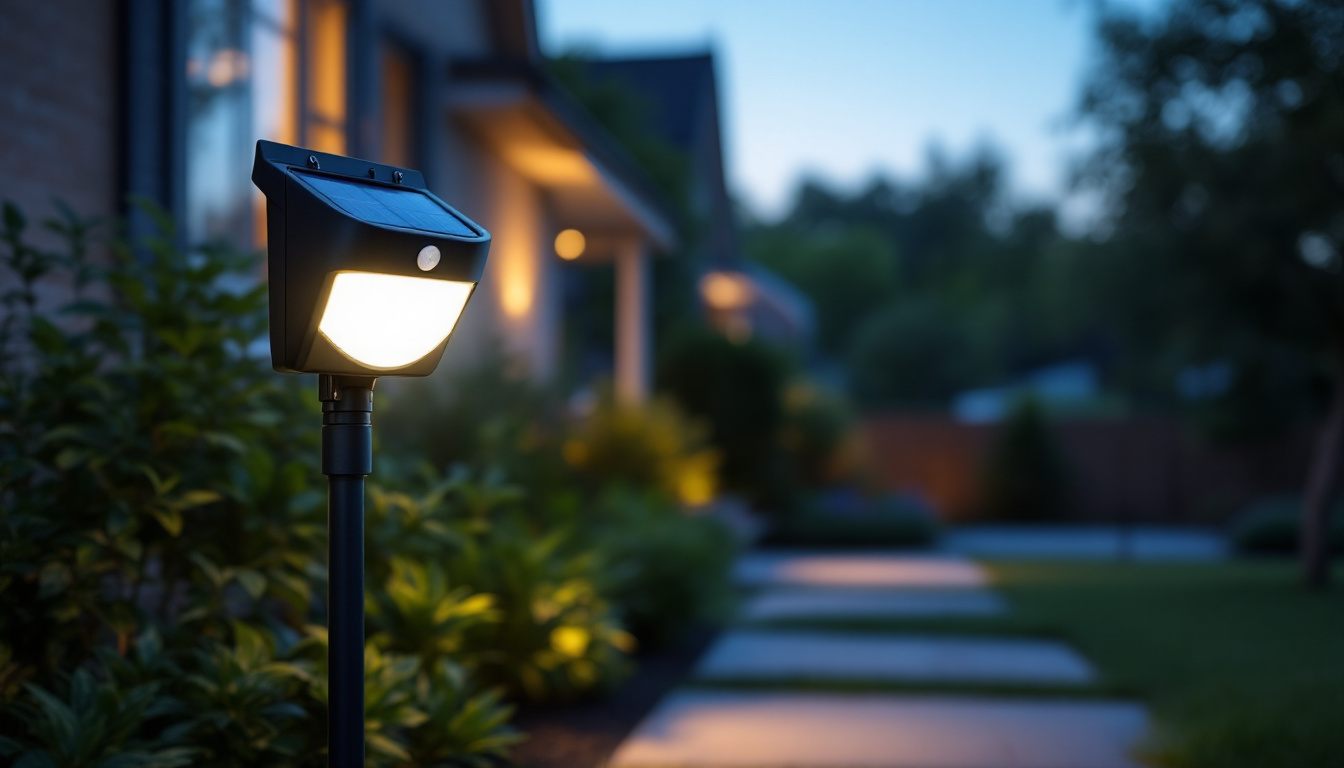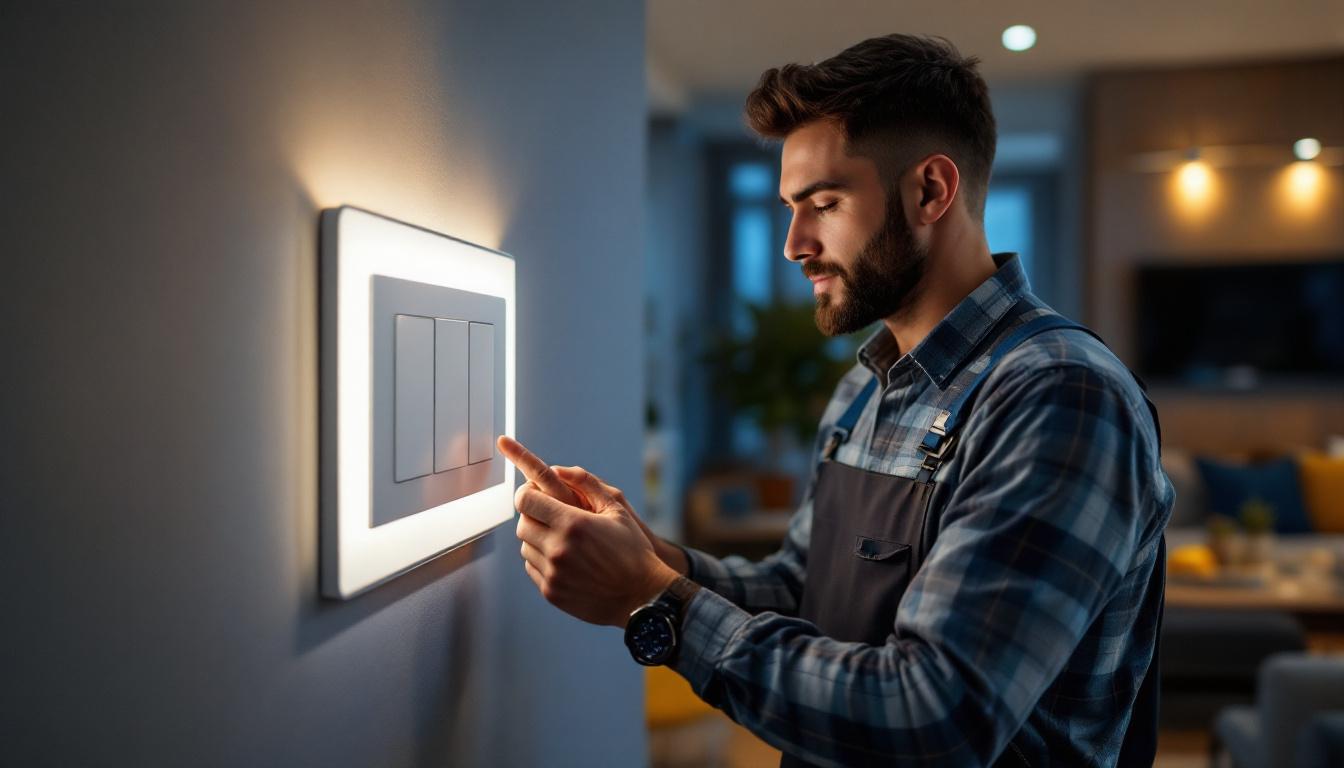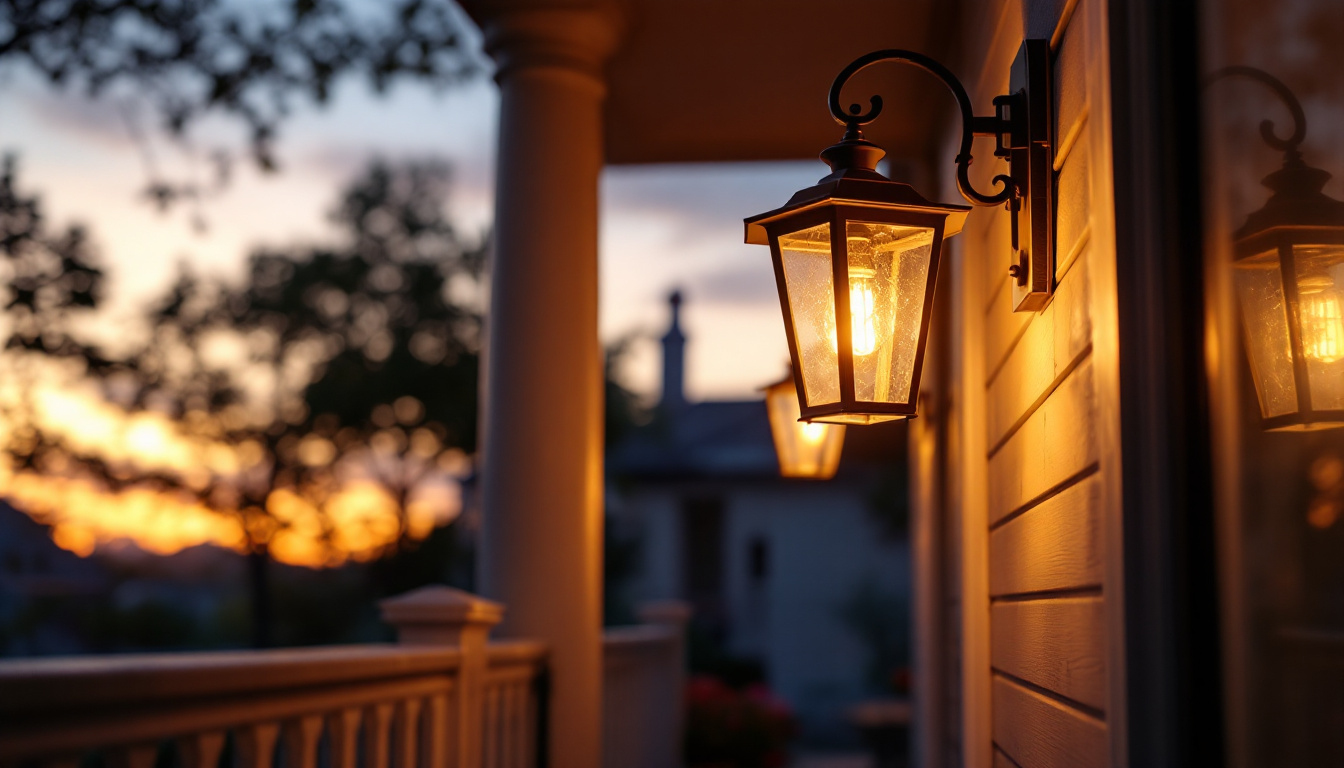
As the demand for sustainable and energy-efficient solutions grows, solar powered motion sensored lights have emerged as a popular choice for both residential and commercial applications. For lighting contractors, understanding the intricacies of these systems is essential to meet client expectations and promote eco-friendly practices. This guide delves into the various aspects of solar powered motion sensored lights, providing valuable insights for lighting contractors.
Solar powered motion sensored lights combine renewable energy technology with advanced motion detection systems. These lights harness solar energy during the day, storing it in batteries for use at night. The integration of motion sensors allows for automatic activation, enhancing security and energy efficiency.
The core components of solar powered motion sensored lights include solar panels, batteries, LED bulbs, and motion sensors. Solar panels capture sunlight, converting it into electrical energy, which is stored in rechargeable batteries. When motion is detected, the sensor triggers the LED lights to illuminate, providing light only when needed.
This mechanism not only conserves energy but also extends the lifespan of the lighting system, as LEDs are known for their durability and low power consumption. The combination of these technologies results in a cost-effective and environmentally friendly lighting solution. Additionally, many models are equipped with adjustable sensitivity settings and light duration, allowing users to customize their lighting experience based on specific needs or preferences. This adaptability makes them suitable for various applications, from residential gardens to commercial parking lots.
For lighting contractors, promoting solar powered motion sensored lights comes with numerous advantages. Firstly, they significantly reduce electricity costs, as they rely on solar energy rather than grid power. This is particularly appealing to clients looking to lower their utility bills.
Additionally, these lights contribute to environmental sustainability. By utilizing renewable energy, they help reduce carbon footprints and promote a greener lifestyle. Furthermore, the ease of installation—often requiring no wiring—makes them an attractive option for both contractors and clients. The versatility of these lights also means they can be installed in a variety of locations, including pathways, driveways, and outdoor patios, enhancing safety and visibility in these areas. Moreover, many modern solar motion lights come equipped with smart technology, allowing users to control them remotely via smartphone apps, providing an added layer of convenience and security.
While solar powered motion sensored lights offer many benefits, successful installation requires careful consideration of several factors. Lighting contractors must assess the specific needs of each project to ensure optimal performance.
Before installation, conducting a thorough site assessment is crucial. Factors such as sunlight exposure, potential obstructions, and the intended use of the lighting should be evaluated. Ideally, solar panels should receive direct sunlight for a minimum of six hours a day to charge effectively.
Contractors should also consider the geographical location and seasonal variations in sunlight. In areas with limited sunlight, it may be necessary to recommend lights with larger solar panels or higher-capacity batteries to ensure reliable performance. Furthermore, the orientation of the solar panels can significantly impact their efficiency; south-facing installations typically capture the most sunlight in the northern hemisphere. It’s also important to evaluate any nearby trees, buildings, or other structures that might cast shadows on the solar panels, as even partial shading can greatly reduce their energy output.
With a myriad of solar powered motion sensored lights available on the market, selecting the right products is vital. Contractors should prioritize lights with high-quality solar panels, efficient LED technology, and reliable motion sensors. Look for products that offer adjustable sensitivity settings and customizable lighting durations to cater to various client preferences.
Additionally, durability is key. Products designed to withstand harsh weather conditions will provide longevity and reliability, reducing the need for frequent replacements. Always check for warranties and certifications to ensure the products meet industry standards. Beyond just durability, consider the aesthetics of the lighting fixtures as well; they should complement the architecture and landscaping of the property. This can enhance the overall appeal while providing functional illumination. Moreover, energy efficiency ratings can also guide product selection, ensuring that the chosen lights not only perform well but also contribute to sustainability goals by minimizing energy consumption.
Once the appropriate products have been selected, following best practices during installation will enhance performance and client satisfaction. Proper installation is essential for maximizing the effectiveness of solar powered motion sensored lights.
Placement of the lights plays a critical role in their functionality. Motion sensors have specific detection ranges, and positioning the lights at the correct height and angle will ensure maximum coverage. Typically, lights should be mounted 6 to 10 feet above the ground, depending on the model and the area being illuminated.
Contractors should also consider the direction of the solar panels. They should face south in the northern hemisphere and north in the southern hemisphere to capture the most sunlight. Avoid placing the lights near obstructions such as trees or buildings that may cast shadows on the solar panels. Additionally, it is beneficial to assess the landscape and anticipate seasonal changes that may affect sunlight exposure. For instance, if a tree is currently bare in winter but full of leaves in summer, it could block sunlight during the warmer months, reducing the efficiency of the solar panels.
Even though solar powered lights are designed to be wireless, some models may require minimal wiring, particularly when connecting multiple units. Contractors should ensure that any wiring is properly insulated and protected from the elements to prevent damage.
Battery maintenance is another important aspect. Educating clients on the importance of keeping the batteries charged and replacing them as needed will ensure the longevity of the lighting system. Providing a clear maintenance schedule can help clients understand how to care for their new lights effectively. Furthermore, it’s essential to inform clients about the types of batteries used in their solar lights, as different batteries have varying lifespans and performance characteristics. For instance, lithium-ion batteries tend to offer better longevity and efficiency compared to traditional nickel-cadmium batteries, making them a preferred choice for high-performance solar lights. Regularly checking the connections and ensuring they are free from corrosion can also significantly enhance the performance and reliability of the system.
Despite their advantages, solar powered motion sensored lights can present challenges. Being prepared to address these issues will enhance the contractor-client relationship and improve overall satisfaction.
In locations where sunlight is limited, clients may express concerns about the effectiveness of solar powered lights. Contractors can alleviate these worries by recommending models with larger solar panels or higher-capacity batteries. Additionally, suggesting alternative lighting solutions for areas with insufficient sunlight can provide clients with peace of mind.
It may also be beneficial to discuss the possibility of integrating solar lights with traditional electrical systems for hybrid solutions, ensuring clients have reliable lighting regardless of weather conditions. Furthermore, educating clients about the importance of regular maintenance, such as cleaning the solar panels to remove dirt and debris, can significantly enhance the performance of these lights. This simple step can maximize sunlight absorption and prolong the lifespan of the lighting system, ultimately leading to greater client satisfaction.
Another common issue relates to motion sensor sensitivity. Clients may find that the lights activate too frequently or not at all. Educating clients on adjusting sensitivity settings can help mitigate these concerns. Providing a demonstration during installation can also empower clients to make adjustments as needed.
In some cases, environmental factors such as wind or passing animals can trigger false alarms. Contractors should advise clients on optimal placement to minimize these occurrences, ensuring the lights serve their intended purpose without unnecessary interruptions. It might also be helpful to discuss the different types of motion sensors available, such as passive infrared or microwave sensors, as each has its own advantages and ideal applications. By tailoring the choice of sensor to the specific environment, contractors can enhance the functionality of the lighting system, ensuring it meets the unique needs of each client while minimizing potential frustrations.
Educating clients about the maintenance of solar powered motion sensored lights is crucial for ensuring long-term satisfaction. Regular upkeep will extend the lifespan of the lights and enhance their performance.
Over time, dirt and debris can accumulate on solar panels, reducing their efficiency. Contractors should recommend that clients periodically clean the panels with a soft cloth and mild soap to maintain optimal performance. This simple maintenance task can significantly impact the lights’ ability to charge effectively.
In areas with heavy pollen or dust, more frequent cleaning may be necessary. Providing clients with a maintenance schedule can help them stay on top of this task.
As with any battery-operated device, the batteries in solar powered motion sensored lights will eventually need replacement. Educating clients about the signs of battery degradation, such as dimming lights or reduced motion detection range, will help them recognize when it’s time for a replacement.
Contractors can also recommend high-quality batteries that offer longer life spans, ensuring that clients get the most out of their investment. Providing information on where to purchase replacement batteries can further enhance the client experience.
Solar powered motion sensored lights present a compelling solution for lighting contractors looking to provide energy-efficient and sustainable options to their clients. By understanding the technology, installation best practices, and maintenance requirements, contractors can effectively meet client needs and promote environmentally friendly practices.
As the demand for renewable energy solutions continues to rise, staying informed about advancements in solar technology will position contractors as leaders in the industry. Embracing solar powered motion sensored lights not only benefits clients but also contributes to a more sustainable future for all.
Ready to elevate your lighting solutions with the efficiency and sustainability of solar powered motion sensored lights? Look no further than LumenWholesale, where we provide lighting contractors with the highest quality, spec-grade lighting products at unbeatable wholesale prices. Our commitment to cutting out the middleman means you get superior lighting without the inflated markups, and our extensive selection adheres to the strictest industry standards. With the added convenience of free shipping on bulk orders, LumenWholesale is your go-to source for premium lighting at the best value. Don’t compromise on quality or price—Wholesale Lighting at the Best Value is just a click away.

Illuminate your projects with expert insights! Discover essential tips and considerations for lighting contractors working with outdoor string lights, from installation techniques to design trends, ensuring every space shines brilliantly..

Discover how light smart switches are revolutionizing the lighting industry, offering contractors a competitive edge with enhanced energy efficiency, seamless integration, and cutting-edge technology.

Discover essential tips and innovative strategies for lighting contractors to enhance porch illumination projects.

Discover why lighting contractors should prioritize dimer switches in their projects.